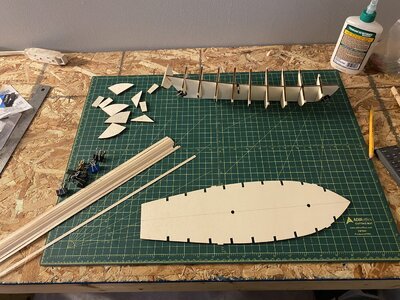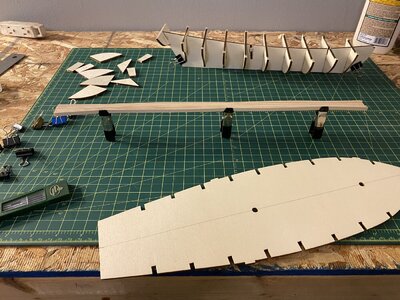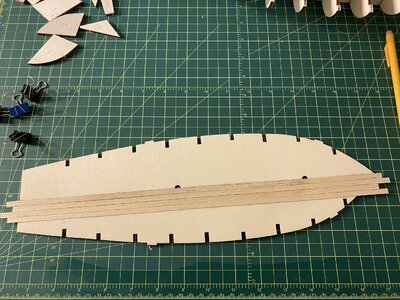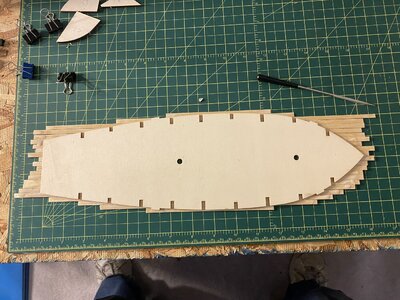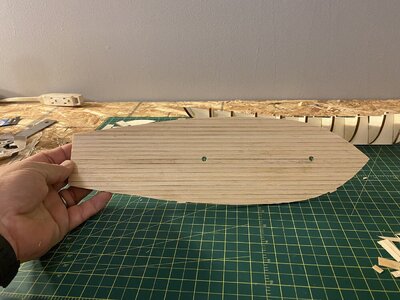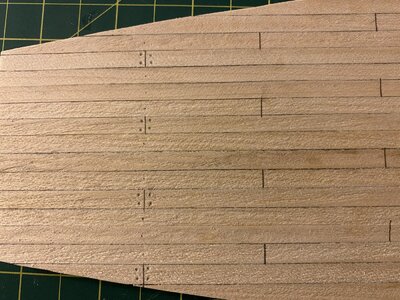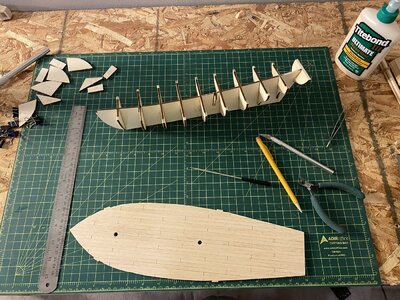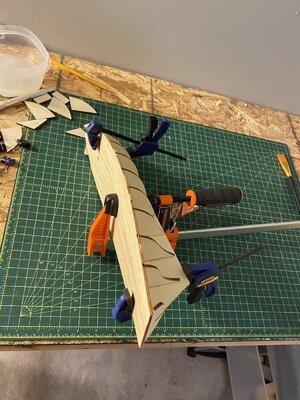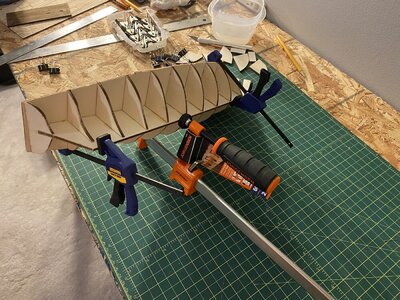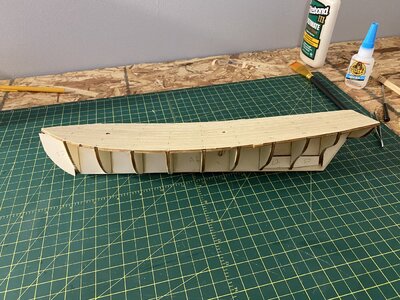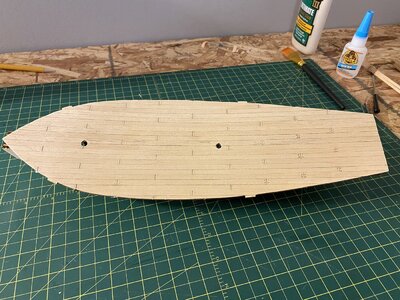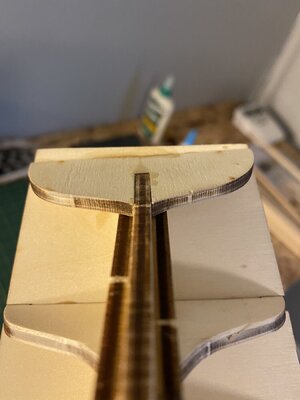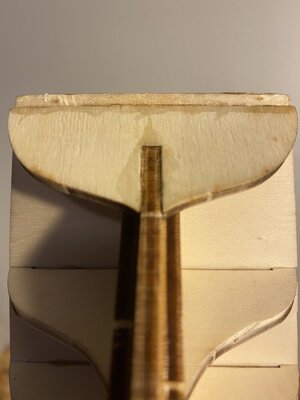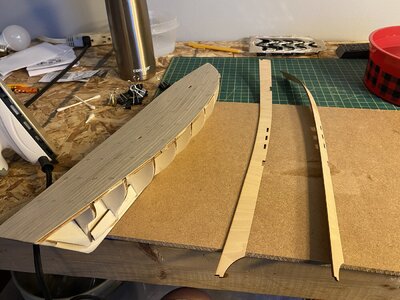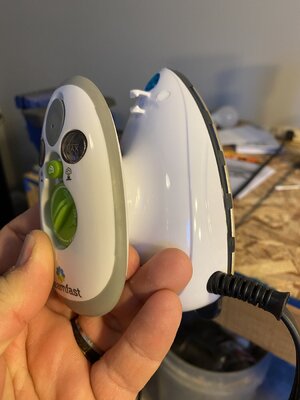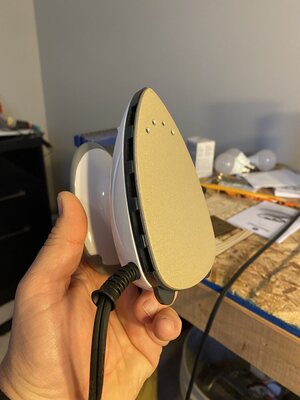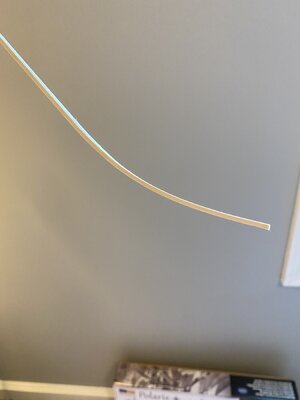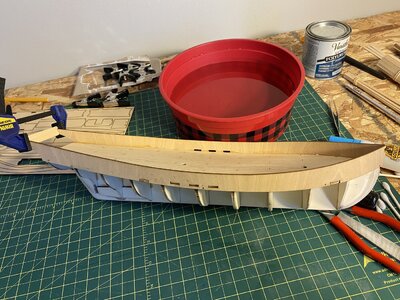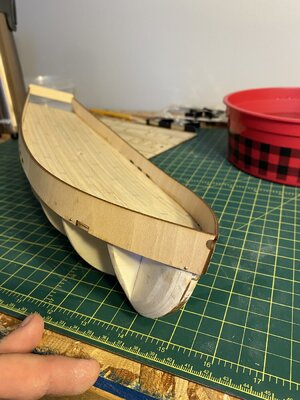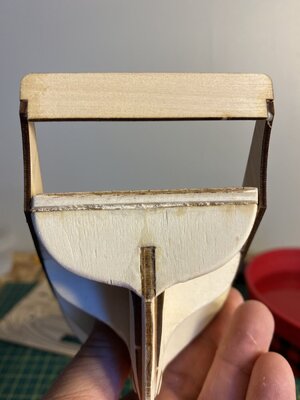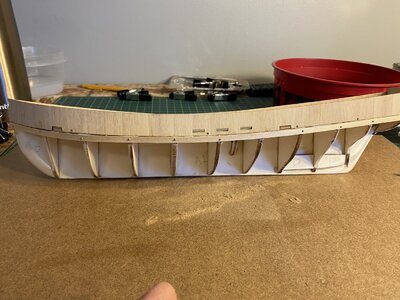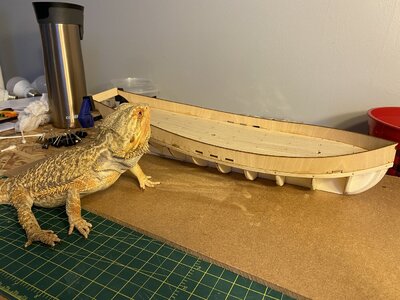So here we go...
Finally got my workshop set back up after some family responsibilities forced me to give it up for a while. Time for a new hobby! I've always like sailing ships, just from an aesthetic point of view, and have been fascinated by the scale models I've seen people build. But it's always been something that I thought, "even if I had the time, I could never do that." Then, late one night, I found myself down a YouTube rabbit hole, and started to think, maybe I CAN do this if I don't try to build the most complicated thing right off the bat.
That brought me to this:
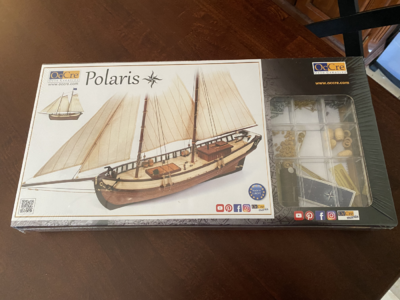
I got a collection of tools together (I already had a lot of them, anyway), and ordered the kit. Last night, I opened the box...
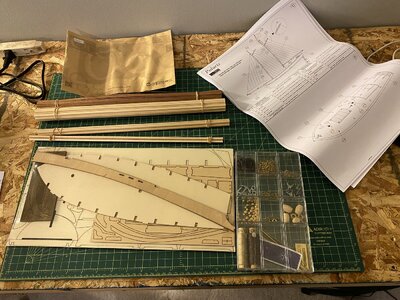
Ooookay... little more intimidated now, but still confident. I started by numbering the laser-cut hull parts, and then separating them from the frame. A quick sanding to remove the tabs, and things are looking a bit more manageable.
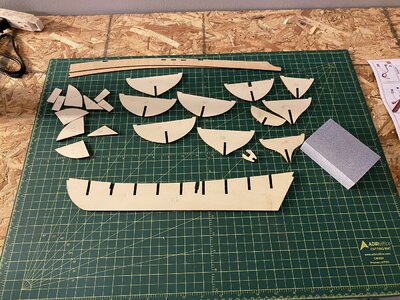
I didn't get any photos of the actual assembly, since I was doing my best not to get glue all over everything, and I certainly didn't want any on my phone. I had a bit of trouble keeping the bulkheads straight while preparing the next piece, then I had a bit of an epiphany:
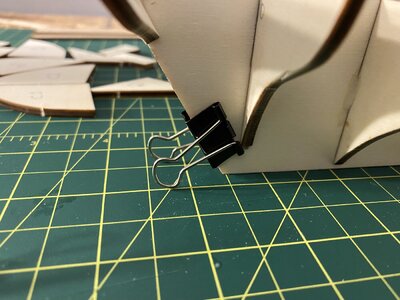
Bulldog clips make excellent stabilizers! After about 2 hours of work, it was beginning to look (at least conceptually) like a ship.
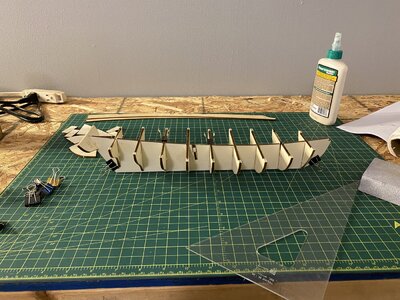
Next step is planking the deck. The instructions call for drawing the plank pattern as a simple staggered pattern, but after looking at a lot of other builds, I like the look of a 5-butt shift. My concern is that it would be too "busy" on a deck this small, but the staggered pattern looks too plain, and not "realistic" to me. Anybody have any thoughts?
Finally got my workshop set back up after some family responsibilities forced me to give it up for a while. Time for a new hobby! I've always like sailing ships, just from an aesthetic point of view, and have been fascinated by the scale models I've seen people build. But it's always been something that I thought, "even if I had the time, I could never do that." Then, late one night, I found myself down a YouTube rabbit hole, and started to think, maybe I CAN do this if I don't try to build the most complicated thing right off the bat.
That brought me to this:

I got a collection of tools together (I already had a lot of them, anyway), and ordered the kit. Last night, I opened the box...

Ooookay... little more intimidated now, but still confident. I started by numbering the laser-cut hull parts, and then separating them from the frame. A quick sanding to remove the tabs, and things are looking a bit more manageable.

I didn't get any photos of the actual assembly, since I was doing my best not to get glue all over everything, and I certainly didn't want any on my phone. I had a bit of trouble keeping the bulkheads straight while preparing the next piece, then I had a bit of an epiphany:

Bulldog clips make excellent stabilizers! After about 2 hours of work, it was beginning to look (at least conceptually) like a ship.

Next step is planking the deck. The instructions call for drawing the plank pattern as a simple staggered pattern, but after looking at a lot of other builds, I like the look of a 5-butt shift. My concern is that it would be too "busy" on a deck this small, but the staggered pattern looks too plain, and not "realistic" to me. Anybody have any thoughts?



